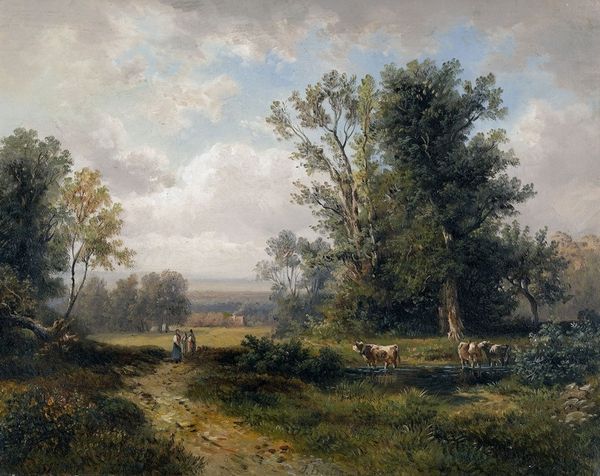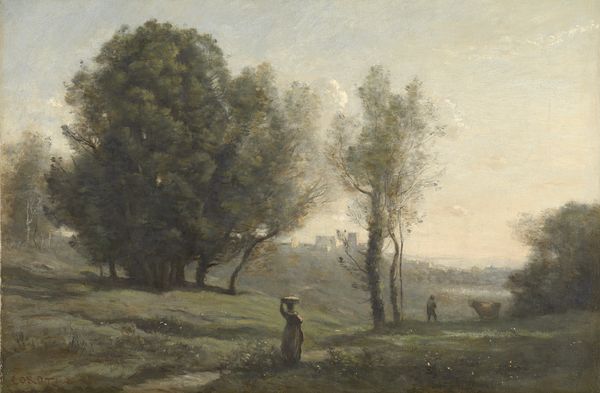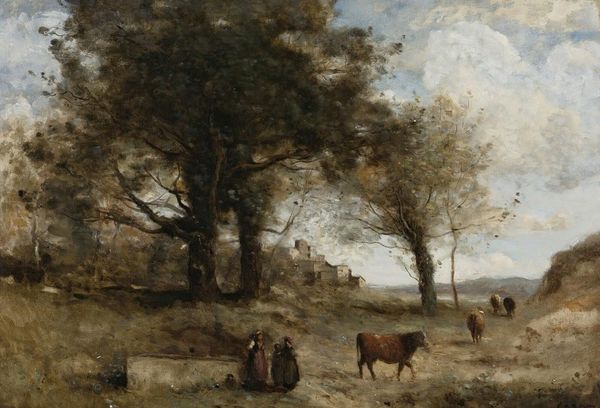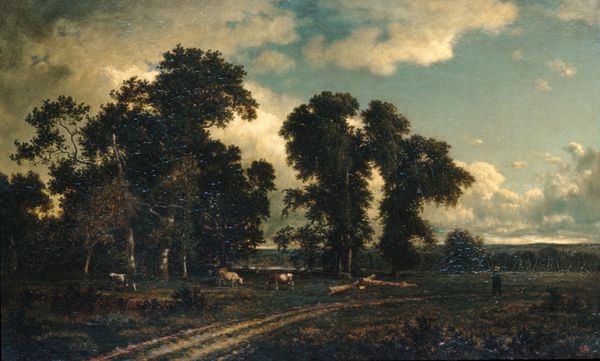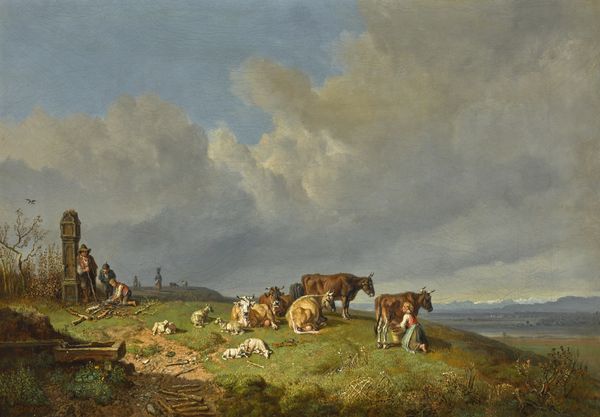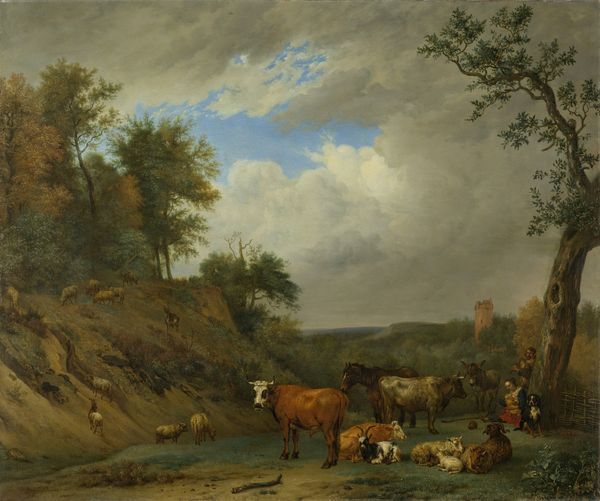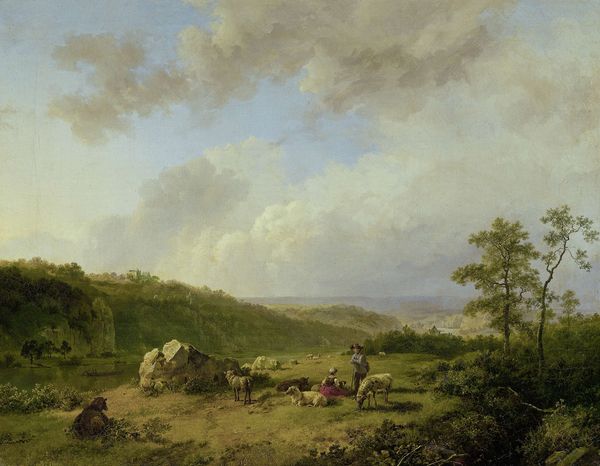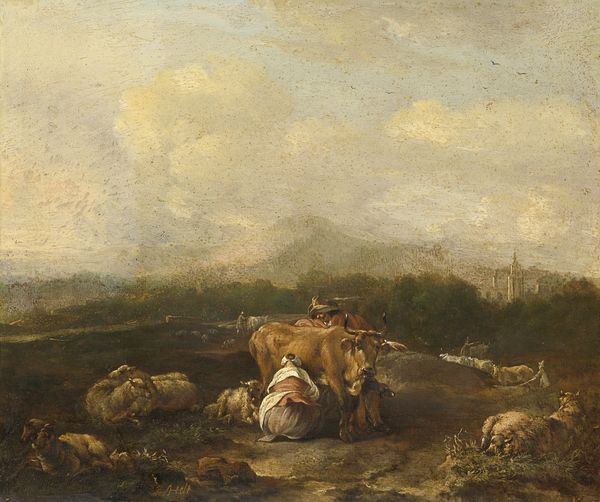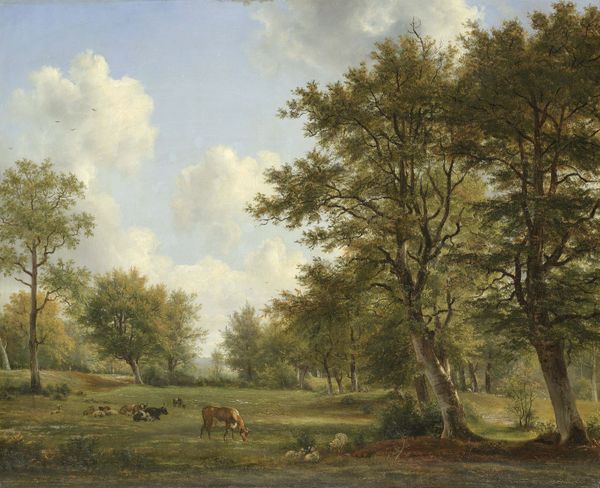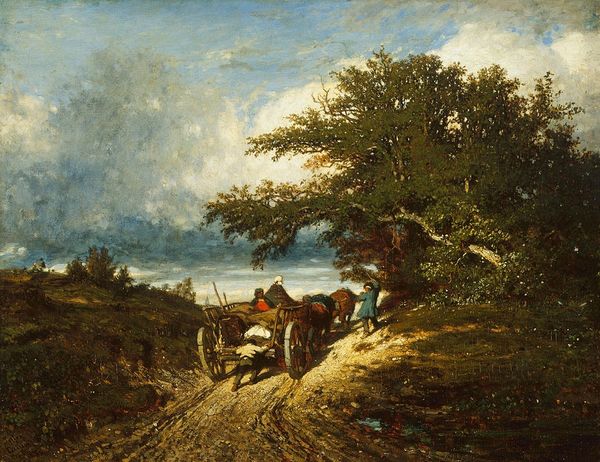
plein-air, oil-paint
#
dutch-golden-age
#
plein-air
#
oil-paint
#
landscape
#
nature
#
oil painting
#
genre-painting
#
realism
Dimensions: height 39 cm, width 55 cm, height 66.7 cm, width 81.7 cm, thickness 11 cm
Copyright: Rijks Museum: Open Domain
Editor: We're looking at "Meadow near Oosterbeek" by Gerard Bilders, painted around 1860. It’s an oil painting, currently held at the Rijksmuseum. It’s such a calming scene. I love how the artist captured the hazy light. What are your initial thoughts on the composition and the artist's use of color? Curator: The structure is indeed quite deliberate. Note the division into three distinct horizontal bands. The foreground presents immediate textural detail via the brushstrokes rendering the foliage. Our focus is guided to the resting cows. Ascending to the mid-ground, the landscape opens into a muted field, its depth subtly achieved with variations of color and value, culminating in the diffused horizon line with an atmospheric sky, rendered with broad strokes. What affect is produced by the artist in his implementation of value and intensity of light? Editor: It creates a definite sense of depth, and the limited palette feels very grounded and real. It feels like you could step right into it. Curator: Precisely. Pictorial depth is enhanced through subtle tonal gradations. Do you perceive any significance in the strategic placement of the darker masses of the trees and cows? Consider how they contrast against the light open areas. Editor: They seem to frame the scene, directing our eyes towards the center of the landscape. Curator: An accurate observation. They serve as anchors, delineating the boundaries of the pastoral scene, establishing the visual rhythm and balance that are integral to its aesthetic impact. Bilders’ focus is primarily on rendering the experience of form and colour through light; in essence he is creating not simply a pastoral scene but a compositional arrangement predicated upon value contrasts. Editor: I see that now. So, by examining these visual elements—the color, composition, light, he gives us so much meaning. Curator: Indeed. This attention to the intrinsic qualities of form allows one to view this pastoral image beyond its thematic properties. We arrive at an appreciation of aesthetic relationships established solely by the interaction of line, shape, color, texture and light, which defines his painting, imbuing his canvases with an air of harmonious formal reconciliation.
Comments
rijksmuseum over 2 years ago
⋮
During the summers in the 1860s, a group of painters gathered to work directly from nature in Oosterbeek, in the province of Gelderland. There, the Veluwe ridge of hills meets the low, broad valley of the Rhine. The generation of artists active before Bilders, the painters of the Romantic period, delighted in capturing that contrast. Bilders, however, singled out the ‘ordinary’ meadows in the forelands of the Rhine.
Join the conversation
Join millions of artists and users on Artera today and experience the ultimate creative platform.

